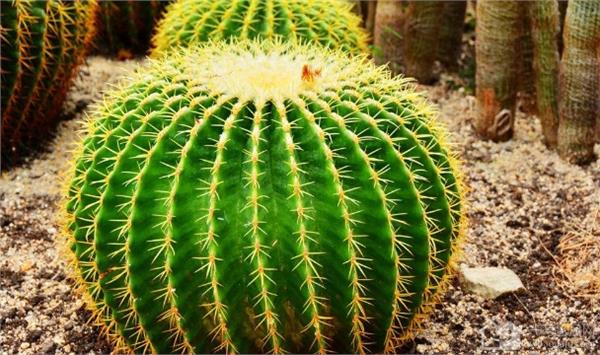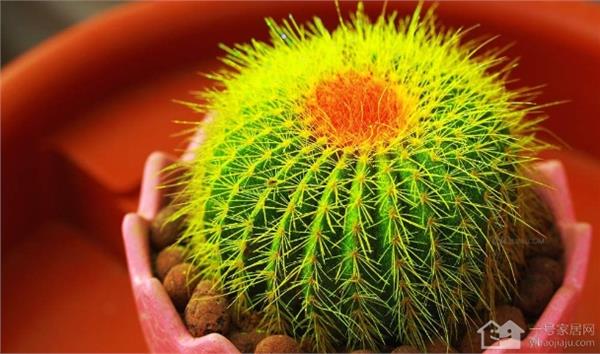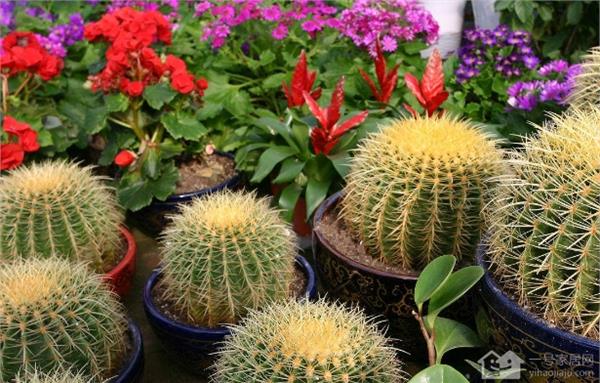The radiation of the breeding method of the commander is no longer seen.
Cactus, we have all seen it. Today, the editor is going to tell you that the more precious kind of cactus is called Big Leader. Is the name very domineering? It is a relatively rare variety of cactus, and the process of flowering is also very slow, so let's learn about the breeding method of Dajuan.

I. the breeding method of the Great Leader
1. The best propagation time: sowing can be carried out in autumn when the climate, soil and temperature difference are suitable, and planting should be carried out in late April or mid-early May.
2. The best growing soil: the Grand Commander is not strict with the soil, but it is better to use the rich and loose neutral sandy soil.
3. Growth humidity requirements: the breeding of the leader needs to keep the soil moist.
4. The best growth temperature: the best growth temperature is 20 °C and 30 °C.
5, the best growth light: the general leader likes warmth and sunlight, avoid exposure to the sun.

2. Matters needing attention of the master of aquaculture:
1. Spread fertilizer:
The fertilization under the general leadership should be based on dry manure and supplemented by liquid fertilizer. Because this kind of flower is farmed mostly in balcony, windowsill, top dressing organic liquid fertilizer, easy to send out a kind of unbearable smell, so should use as little as possible or do not use, lest pollute the environment. In the growing season, it is necessary to apply liquid fertilizer, a small amount of organic fertilizer can be used, and an appropriate amount of chemical fertilizer can be added, because chemical fertilizer has the advantages of high efficiency, rapidness, convenience and hygiene. Commonly used chemical fertilizers are urea, potassium dihydrogen phosphate and other three elements of fertilizer, as well as a variety of chemical fertilizer tablets. However, this kind of fertilizer must be used according to the instructions, and the concentration generally does not exceed 0.1%. Do not increase the concentration at will, so as not to burn the roots and apply light fertilizer frequently. At the same time, the next morning after each fertilization, a permeable water should be irrigated, so that the soil is fertile and moist, which is more conducive to plant absorption. In the middle of summer and cold, stop fertilizing to facilitate summer and jelly.
2. Watering key points:
Due to the dry environment, the water in the basin soil evaporates quickly, especially in the growing season, in order to prevent the basin soil from being too dry and make the plant dehydrated, it is necessary to replenish water at any time, generally watering 2 or 3 times a week. Summer into a semi-dormant state, watering to see wet and dry, that is, when the soil surface is hard, the surface is white, and then water thoroughly. In order to avoid the occurrence of large and permeable basin, the soil in the basin should not be too full, and the soil surface should be at least 2 meters away from the edge of the basin, so as to loosen the soil and water and increase soil permeability. Watering in summer depends on plant growth and climate. Usually before 10:00 in the morning, watering is best after 5pm. Watering in autumn is the same as in spring. Watering can be done once or twice a month in winter.
3. Replacement of basin soil:
The Grand Leader can turn the basin and change the soil every year to increase the soil fertility.

4. Main points of reproduction:
The reproduction of the Great Leader mainly adopts the methods of sowing, cutting and grafting to carry out all kinds of routine reproduction.
Sowing: it can be carried out in autumn when the climate, soil and temperature difference are suitable, and sow with picking. At the same time, seed propagation can not only maintain the good shape of the female parent and strong resistance, but also produce a large number of seedlings for market needs.
The first problem is to solve the source of the ball. The big leader has a low ability to sprout new buds, and most of them grow independently. In order to obtain the seed ball, the breeder can remove the growth point at the top of the mother ball and promote the sprouting of the bulbs in the upper part of the bulb. After such an attack, each cue ball can sprout dozens of balls. It is necessary to strengthen the management of water and fertilizer, temperature and light to promote the growth of small balls. In general, after 1 ~ 2 years of application growth, when the ball promotes 1.8 × 2 cm, it can be cut away from the mother ball for cuttage propagation.
Grafting: the most fundamental problem in the propagation or cultivation of grafting is to synthesize a new body of rootstock and scion through grafting techniques. But in practice, it is inevitable that there will be differences in stem shape, body size, seedling age and so on. If you encounter these situations, you must make a good comparison before grafting to make it as close as possible. When grafting, the central vascular bundles of both must be found, preferably the central vascular bundles of rootstocks and scions are basically equal, and the two return ports overlap after flat grafting, which is the key to the survival of grafting.
3. Disease and pest control:
The diseases of the leader are stem rot, and the pests are red spiders and shell insects.
Related
- Wuhan Hospital Iron Tree Blooming Result Was Instantly Frightened by the Gardener Master
- Which variety of camellia is the most fragrant and best? Which one do you like best?
- What is the small blue coat, the breeding methods and matters needing attention of the succulent plant
- Dormancy time and maintenance management of succulent plants during dormancy
- Minas succulent how to raise, Minas succulent plant pictures
- What are the varieties of winter succulent plants
- How to raise succulent plants in twelve rolls? let's take a look at some experience of breeding twelve rolls.
- Attention should be paid to water control for succulent plants during dormant period (winter and summer)
- Watering experience of twelve rolls of succulent plants
- Techniques for fertilizing succulent plants. An article will let you know how to fertilize succulent plants.



